13+ Sample Content License Agreement
-
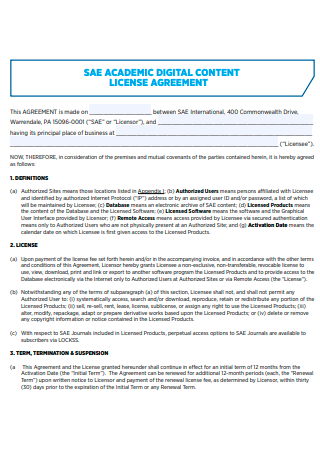
Academic Digital Content License Agreement
download now -

Content License Agreement Template
download now -
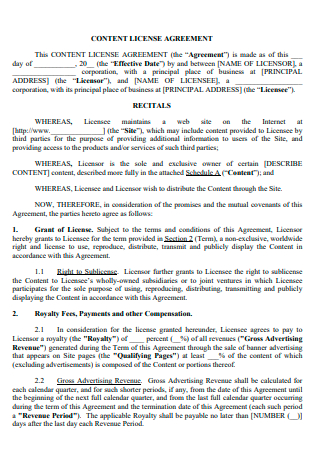
Basic Content License Agreement
download now -
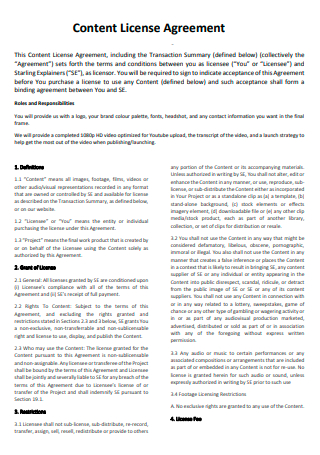
Content License Agreement in PDF
download now -
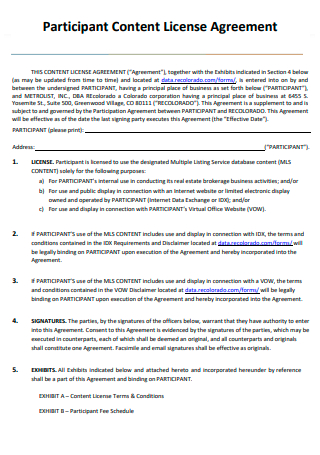
Participant Content License Agreement
download now -
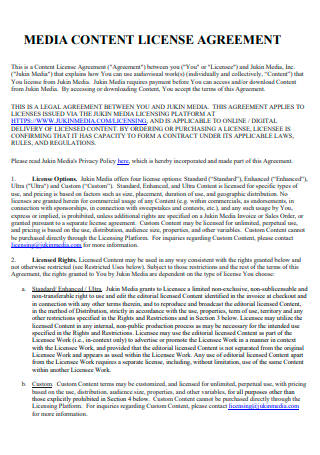
Media Content License Agreement
download now -
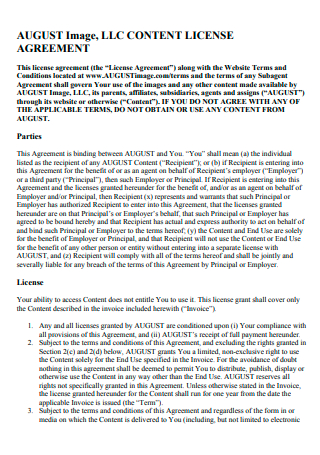
LLC Content License Agreement
download now -
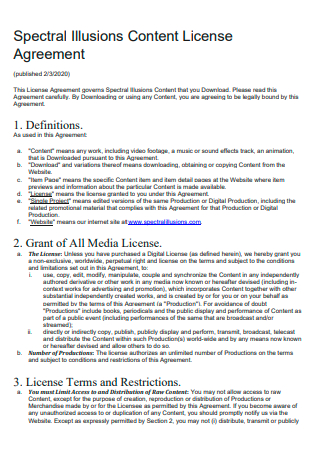
Spectral Illusions Content License Agreement
download now -
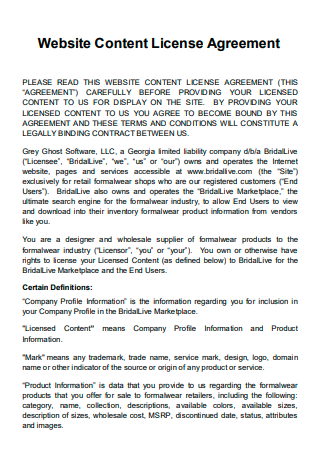
Website Content License Agreement
download now -

Content License Agreement Example
download now -

Images Content License Agreement
download now -
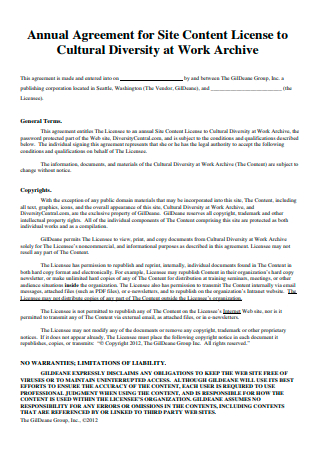
Site Content License Annual Agreement
download now -
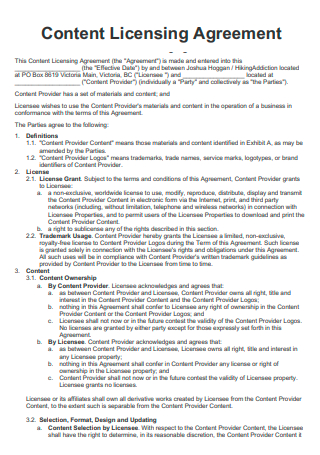
Standard Content Licensing Agreement
download now -
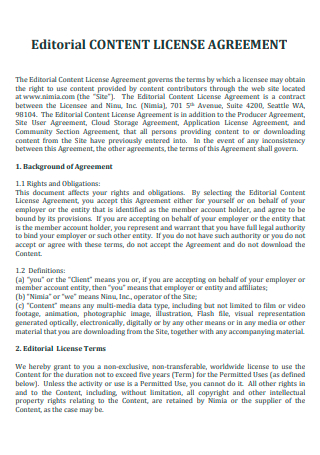
Editorial Content License Agreement
download now
FREE Content License Agreement s to Download
13+ Sample Content License Agreement
What Is a Content License Agreement?
What’s Inside a Content License Agreement?
Steps in Making a Content License Agreement
FAQs
When is a content license agreement needed?
What is the disadvantage of entering a licensing agreement?
Does a royalty-free license signify that a product is free for commercial use?
What Is a Content License Agreement?
First of all, what is content licensing? Well, it simply refers to a mechanism that allows a publisher to expand by using content across several channels for content consumption. In commercial terms, it is the transfer of intellectual property by a publisher to third parties in return for payment or traffic referrals. Though content purchase and content licensing are easily comparable to one another, it is not the same thing. Purchasing content isn’t the same as licensing it. Purchasing content is prohibitively expensive, costing around 10 times as much as licensing it from another source.
What is a content license agreement? It is a legal document that allows businesses to repurpose or republish content. It’s a versatile option for businesses that want to distribute previously published goods. It’s also known as a copyright license. Also known as a copyright license, the legal ownership and use of the intellectual property is addressed in a content license agreement. Entering into a licensing arrangement would benefit the licensee since they would have faster and more efficient market access because they would be using the established intellectual property. Additionally, another advantage of this type of agreement is that a business entering it would have access to different kinds of media that can help them grow as a brand.
What’s Inside a Content License Agreement?
Content licensing essentially forces both parties into an agreement or a contract that outlines the rights and terms for usage of specific intellectual property. In order for the agreement to be effective, it needs to have the following elements:
Steps in Making a Content License Agreement
Many agreements can be difficult or time-consuming to create. Such is the case of a content license agreement. Since it is complex to create, it needs to be accurate enough and must possess the ability to be customizable by either party during the negotiation phase. With that being said, here are the steps to guide you when making a content license agreement. Take note that legal expertise may be required after drafting this document to go over the finer details of the agreement.
-
1. Identification of the Parties Involved
The first step in creating a content licensing agreement is to determine the parties involved in the document. In a content licensing agreement, the parties involved are the content licensor and the licensee. The main responsibilities and obligations of the licensee are to agree to comply with all the legal necessities with regards to using the licensor’s content and shall not use the said content for the purpose of violating the terms of the agreement. The main responsibilities and obligations of the licensor in this agreement are to provide any kind of reasonable assistance to the licensee concerning the usage of their content as well as provide support to any kind of issues that may arise following the usage of their content.
-
2. Identification of the License
After identifying the parties involved in the agreement, this step will follow. During this step, the type of license that is to be agreed upon by the parties involved must be determined. The most common licenses are copyright licenses that outline the right to make copies and sell legally protected material, trademark licenses that grant legal authorization to use a company’s trademark, patent licenses that grant the right to use, sell, manufacture, and share a patented product, and trade secret licenses that outline how and when you are given permission to use a company’s trade secrets.
-
3. Drafting of the Main Terms
After the type of licensing to be used in the agreement has been identified, proceed to this step. In this step, the main terms of the content licensing agreement must be drafted. Some of the main terms include the term of the agreement which specifies how long the license for the material will remain and when it will expire, the trademark usage clause which allows the licensor to provide the licensee a restricted, royalty-free license to use their content, the obligations clause which states in clear wording the obligations of all the parties involved in the agreement, the content ownership clause which states that the licensee owns all derivative works made by them from the licensor’s material as long as they are separable from the main content, and so on.
-
4. Define the Terms of Payment
After the main terms of the content license agreement have been drafted, this step will then follow. In this step, provide and define the terms in which the payment is going to be provided. You may state here that the payment will be done in a one-time payment method or that the payment may be done only when the licensed content is being used. In this step, you may also write that the licensee is responsible for payment of any form of taxes and duties that are deemed applicable by the jurisdiction because of the agreement.
-
5. Draft the Boilerplate Clauses
After defining the main terms and the payment term of the agreement, this step will then follow. Boilerplate clauses are clauses that can be found at the end of the majority of legal documents. Some examples of these are the severability clause which states that an unenforceable part of the agreement can be determined to be null and void without affecting any other parts of the agreement that are enforceable, the force majeure clause which states that neither party should be held responsible for any interruption or performance failure due to circumstances beyond their control, and the termination clause which states the circumstances in which the content license agreement may be ended along with its implications.
FAQs
When is a content license agreement needed?
When you wish to use intellectual property developed by a person or corporation, a content license agreement is required because it specifies how the material will be used and under what contractual conditions. When the licensor grants permission, a corporation can immediately upload the content to their website, promotional materials, social networking websites or profiles, television advertisements, radio adverts, and print advertisements.
What is the disadvantage of entering a licensing agreement?
One disadvantage of having a licensing agreement is the possibility of entering into a deal with the wrong party. It suggests that a licensor may be locked into a long-term contract with a corporation whose values may not coincide with its own. The same logic should apply to the licensee, particularly when it believes a new product or brand would do well in a particular market without conducting adequate research. When this occurs, both parties run the danger of losing brand strength and/or reputation.
Does a royalty-free license signify that a product is free for commercial use?
A product with a royalty-free license is not always free for commercial use, which includes any usage that might lead to the purchase or sale of goods. You may need specific permission to use the picture in resale items, such as a product or digital download.
Having an effective content license agreement is essential since it protects the intellectual property of the licensor from abuse, misuse, or damage by the licensee throughout the agreement. It is also essential on the licensee’s behalf since it enables them to be in a position where they are able to generate much-needed revenue out of someone’s intellectual property, provided with permission of course. In this article, different sample templates of this kind of agreement exist for you to have a look and use as a sample when making one.
